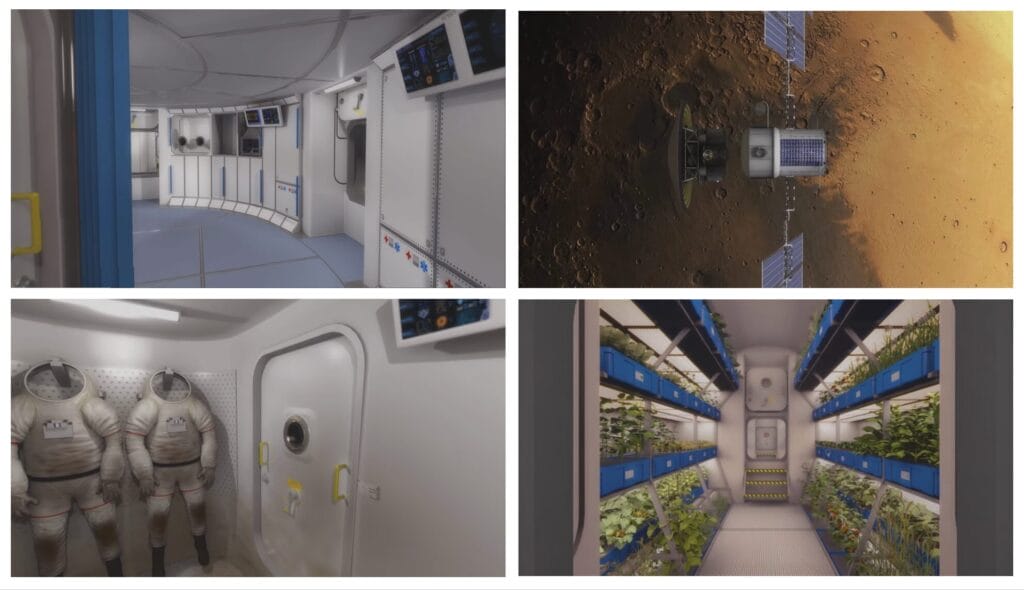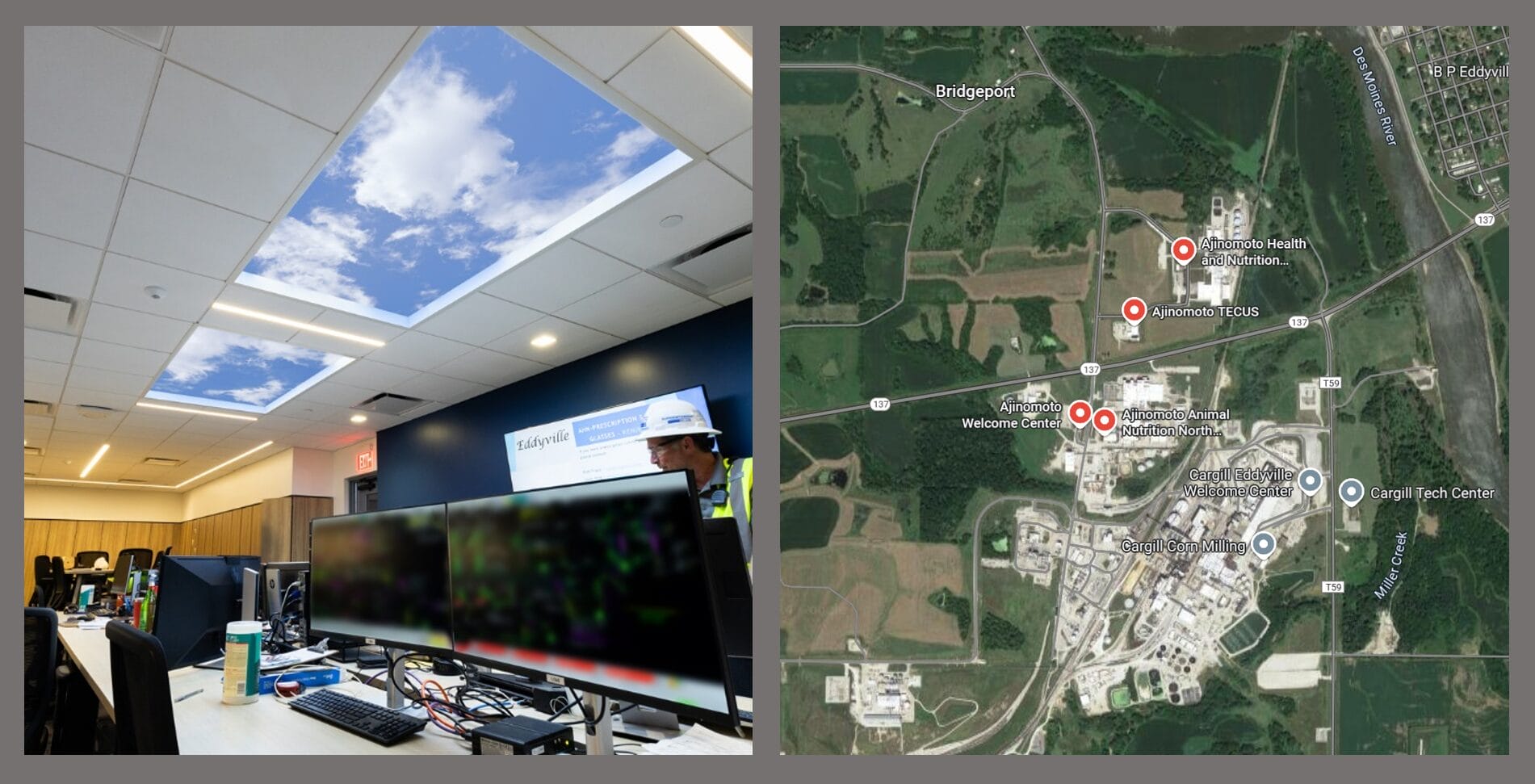Every day across the globe, in major hospitals and clinics, a fair number of healthcare staff labor in highly artificial and isolated interiors. Their ability to maintain focus, emotional resilience, and organize competing demands under pressure is taxing work. And while architects and interior designers collaborate to build efficiencies, provide better support, and help them thrive in high pressure environments, the fact remains that many suffer from workplace burnout.

However, given the challenges in the environment of care are significant, they’re also instrumental in the study of test human endurance and cognitive performance. Now imagine that rather than heading to work in a radiology vault or an ICU floor for your usual shift, you find yourself in a state of suspended animation…speeding through space…heading to Mars on a three-year mission.
By the time your ship lands, you awaken in your new home—a modular headquarters, built and assembled by robots ahead of your arrival, designed to keep you and your team—alive, in an otherwise barren landscape. You find everything you need to survive the extreme conditions of outer space with one possible exception.
While you have a greenhouse to grow food, a controlled ecosystem to filter the air and purify water, and service all the systems needed to sustain life, there’s something about your habitat that feels, well, confining. You’re isolated.

Every time you manage a look out the window there’s nothing but a barren red landscape and the black emptiness of outer space. At first, the sight would be the thrill of a lifetime, but as the days turn into weeks, you will begin to notice an uneasy shift begin to take place: your attention wanders a little more frequently, focus on task doesn’t come as easy or last as long, you feel more sensitive and irritable; fatigue becomes more and more like a perennial mental fog.
You’re experiencing symptoms of burnout 34 million miles from the Earth.
Not good for the crew, mission control, or the planners of the projected mission to Mars in the next decade or so. Turns out that without Earth’s deep blue sky, which provides the multi-sensory theatre that supports our 24-hour circadian cycle, our cognitive faculties would begin to falter, fraying as time passes on without the atmospheric support that helps entrain our sleep-wake cycle and the many other biological rhythms that depend on the sky as our primary zeitgeber (German “time-giver”). And that’s why space agencies like NASA have been assiduously studying the psychological trauma of daylight-deprivation and spatial isolation on cognitive function.

Millions of miles from help of any kind, crew members’ resilience and ability to maintain homeostasis would be tested in ways researchers are hard at work to forecast and reproduce in controlled conditions. Now, what does this have anything to do with healthcare design? It turns out, quite a lot.
After all, many healthcare spaces like radiology settings share many of the characteristics, albeit in a much more compressed timeline, of isolated and claustrophobic environments. Patients’ spike in cortisol levels and general distress upon experiencing the confining environs of a diagnostic or therapeutic session are well established. In fact, evidence-based design environmental solutions are getting a closer look for their ability to modify how our physiology responds when key attributes are prevalent in the environment of care.
Learn more from Meredith Banasiak, director of research at Bolder Associates, who tackles the topic of deprived environments in the latest installment of Science + Design. Her YouTube series discusses how sensory-rich environments nurture human health and peak cognitive performance through biophilic patterns and life-affirming sensory stimuli.

In this episode, you can catch a glimpse of a 3D printed POD (Prototype Outfitter Demonstrators) designed by Foster + Partners for off-world construction. Manufactured by Branch Technology using a proprietary 3D printing technology called C-Fab (Cellular Fabrication), these modular PODs were built for a NASA project exploring how 3D printing technology could help build human habitats in extraterrestrial landscapes.
The NASA PODs leverage a hexagonal design for its modular flexibility supporting a variety of layouts to build highly specialized areas. An interesting feature of the demo project was the inclusion of a custom-made, hexagonal skylight.
The virtual skylight featured Sky Factory’s IRIS Circadian SkyCeiling, which stands out for its ability to generate a bone fide depth illusion in confined or isolated spaces. By offering a perceived opening to a familiar experience of vertical vastness, the virtual skylight offers the most therapeutic benefits of a visual connection to nature—cognitive restoration and emotional modulation, both of which aid performance and health.

IRIS SkyCeilings are powered by two patent-pending algorithms (PRiSM and DiAL), which deliver a dynamic output of spectral lighting that mimics our terrestrial sunrise-to-sunset diurnal arc. Teams can program their facility’s location, time of year (season), and time of day to obtain an accurate spectral display behind an idyllic view to the sky.
Unlike prevailing tunable lighting systems, IRIS also inputs irradiance variability (brightness), which is inherent in daylight. This added feature makes the photographic Open Sky Compositions that generate Sky Factory’s biophilic illusions of nature attain the graceful, yet unexpected visual rhythm of actual daylight.
As previously noted, daylight, in its intensity and temporal color temperature fluctuations, is the most powerful chronobiological cue for human health. In enclosed or isolated environments where daylight’s essential cues are missing or badly compromised, understanding our hardwired habits of perception can aid the design of sensory-deprived environments.

The design of an illusory sky capable of engaging areas of the brain involved in depth perception and spatial cognition while also incorporating a spectrally tunable lighting system makes for a compelling LED illumination system that can mitigate the deleterious impact of high-demand, high constraint environments.
Applied biophilic design using Luminous SkyCeilings has been effectively deployed in the most claustrophobic spaces since 2002. In the near future their therapeutic and restorative qualities may be deployed to help the brave pioneers of deep space exploration make unimaginable off-planet discoveries while their minds and bodies experience the life-affirming attributes of our terrestrial home, even millions of miles away from Earth.



